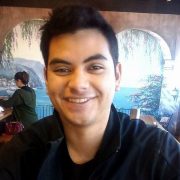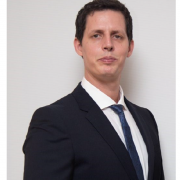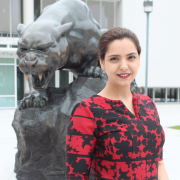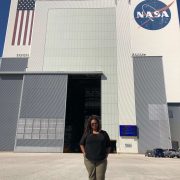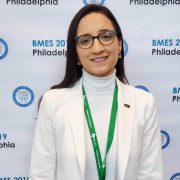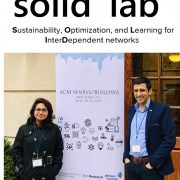Maanasa Jayachandran
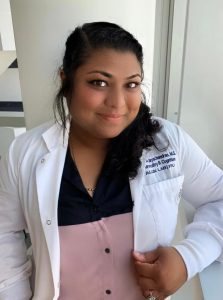 Maanasa Jayachandran has been interested in neuroscience since taking an AP psychology course in the 10th grade. Her casual interest eventually evolved into a fascination with learning and memory.
Maanasa Jayachandran has been interested in neuroscience since taking an AP psychology course in the 10th grade. Her casual interest eventually evolved into a fascination with learning and memory.
“As I took more focused courses and gained research experience, I realized that memory is one of the most fundamental mental processes,” she says. “Basically, without memory, we are capable of nothing but simple reflexes and stereotyped behaviors.”
Maanasa was born in Manhattan, Kansas, and grew up in Miami. She attended the University of Miami, where she earned undergraduate degrees in Neurobiology and Molecular Biochemistry. She earned a master’s degree in Mind and Brain Sciences from the University of Sydney in Australia. Currently, she’s a 5th-year doctoral student at FIU in the Cognitive Neuroscience program in the Department of Psychology.
Maanasa recently won the NIH Blueprint Diversity Specialized Predoctoral to Postdoctoral Advancement in Neuroscience (D-SPAN) Award (F99/K00), a training award that funds the last one to two years of Maanasa’s graduate work at FIU. Once she joins a postdoctoral fellowship lab, the grant funds will transfer to her new institution for three to four years of postdoctoral training.
Maanasa’s work focuses on a specific neural circuit of the medial prefrontal cortex (mPFC) that is known for decision-making. As part of her research, she trains rats to remember sequences of odors by responding to “in-sequence” and “out-of-sequence” odors differently. She uses DREADDs (Designer Receptors Exclusively Activated by Designer Drugs), electrophysiology, and optogenetics to test the hypothesis that different mPFC projections contribute in different ways to short- and long-term aspects of memory retrieval for sequences of events.
“These experiments will establish foundational knowledge about specific mPFC pathways critical to memory and behavior, which will aid in the development of future therapeutic strategies,” Maanasa says. “Moreover, this will help us better understand what might be happening in the brains of people who are affected by memory disorders such as Alzheimer’s disease.”
Maanasa credits Dr. Timothy A. Allen, the principle investigator of the Allen Neurocircuitry and Cognition Lab, for bringing her to FIU. He interviewed her before he opened the lab and ended up offering her a spot.
“In short, he believed in me (which is priceless when it comes to a mentor) and cemented my decision to come here,” Maanasa says. “Moreover, I chose to come here because, although the Cognitive Neuroscience program was brand new at the time, the faculty seemed to be invested in, not only the success of the program, but also the progress and well-being of each student. The faculty cares about our input to improve the program, which has allowed us to shape the program for what it is today.”
Maanasa wants to continue working in academia and research after completing her degree. “I want to extend my training as a postdoctoral researcher by investigating the vulnerability of mPFC pathways in validated genetic rodent models related to mental health disorders such as schizophrenia and Alzheimer’s disease,” she says.
She eventually wants to become an independent investigator and open her own lab where she can continue to explore neural circuitry, memory, and related mental health disorders. Beyond that, she hopes to promote diversity and inclusion within the scientific community.
“Female scientists continue to be underrepresented in the field of neuroscience, and I hope to encourage students from diverse cultural backgrounds to join and excel in this field,” she says.
It’s a goal that winning the NIH award is helping to support and is one of the reasons why winning the award has meant so much to Maanasa. “It not only validates the field I chose to pursue and a sense of belonging in the scientific community, but also, it’s an opportunity to train, educate, and mentor students who are underrepresented and encourage them to pursue their dreams.”
The award has presented Maanasa with the opportunity to learn from respected scientists without the limitations of funding, which is rare. “Through the supportive interactions with my mentor (Dr. Allen) and co-sponsors (Dr. Robert Vertes from Florida Atlantic University and Dr. Farah Lubin from the University of Alabama at Birmingham), my insecurities about becoming a capable neuroscientist are quieted and replaced by confidence,” she says. “I am sincerely honored to be a recipient of this award, and my success speaks not just to my personal achievements but to the mentorship of my current and former PIs.”
Roberto Prado-Rivera
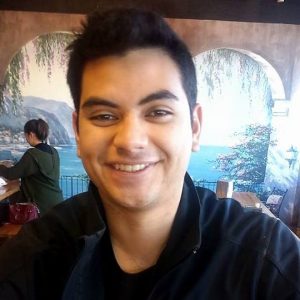 Roberto Prado-Rivera loves learning, and pushing the boundaries of current scientific knowledge is what drives his research. “Some might call it ‘innate curiosity’, but that is too rigid of a description,” Roberto says. “I truly do enjoy learning about new topics, especially those related to physics and mathematics. It’s fun!”
Roberto Prado-Rivera loves learning, and pushing the boundaries of current scientific knowledge is what drives his research. “Some might call it ‘innate curiosity’, but that is too rigid of a description,” Roberto says. “I truly do enjoy learning about new topics, especially those related to physics and mathematics. It’s fun!”
He hopes that pushing boundaries will one day enable him to put his research to use in the solar energy field. NASA’s Minority University Research and Education Project (MUREP) is helping make that goal possible. In 2020, Roberto received a fellowship through the program, which is designed to support research in advancements in space exploration and increase minority STEM opportunities.
Roberto, a doctoral student in Mechanical Engineering, was born and raised in Miami, but his family is originally from Nicaragua. He attended Florida State University for his undergraduate degree. He is still deciding what his plans will be after he completes his doctoral program, but he wants to continue working on projects related to his current interests in nanomaterials, as well as branch out into other areas of scientific computing.
Roberto found out about the NASA fellowship from his advisor, Dr. Daniela Radu, a professor in the Department of Mechanical and Materials Engineering and the director of the NASA Center for Research and Education in 2D Optoelectronics, or CRE2DO, at FIU. CRE2DO aims to create technologies that integrate 2D materials into space-resilient materials, communication devices, and small satellite technology. 2D materials are ultrathin nanomaterials that have a sheet-like structure and can be as thin as a single atom and as thick as a few atoms. Nanomaterials can be used to improve the reliability of mechanical and electrical components in spaceship devices and wearable electronics. CRE2DO’s goal is to create superconductor materials that eliminate the need for battery power. The center is also focused on creating material composites that could be used for spaceship components for future Mars missions and for wearable electronics that would enable high-speed communication between astronauts and the space station.
Dr. Radu provided valuable guidance to Roberto as he prepared his application, and the NSF Bridge to Doctorate Fellowship that helped fund his first two years of graduate study provided several resources in applying for fellowships. However, Roberto says that practice was what helped him the most in applying for the NASA fellowship.
“This was not the first proposal-style application I have written, so I was able to use my past experiences (and mistakes!) to help me write a good application,” he says. “Over time, you will see how your application writing improves after the first couple that you do.”
Roberto says that fellowships provide three main benefits to students: funding their education, providing access to resources (such as labs, computing clusters, and experts in the student’s field), and accolades than can help on future applications. He says the most important thing to take note of when applying is the language of the fellowship.
“In other words, what is it that the judges at NSF, GEM, Fulbright, etc. want to hear?” Roberto asks. “It may come as a surprise to many, but every application is written differently even if the proposal for all of them is the same. Some are more focused on impacts to society, others ask for scientific merit, and even a few are looking for solutions to very specific problems. You want to write towards these focuses, but you have to figure out which one is needed for that application.”
Having a detailed research plan is also important. “By this I mean you should be able to write down the objectives you are setting out to accomplish and the tasks required to complete those objectives clearly and logically,” Roberto says. “A thorough research plan is much more enticing than one that sounds half-baked and incomplete, and the judges will be able to tell.”
One last tip from Roberto is to be specific and concise on the application. He advises that the person reading it should be able to answer key questions within a few minutes.
“What is it that you are proposing to do?” Roberto asks. “Why is what you are researching important? How will this be accomplished? What preliminary results, if any, are available? And what results are expected? The judges have to shuffle through hundreds of applications; do not make their job harder than it already is.”
Robert Tomasetti
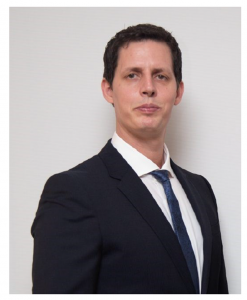
Robert Tomasetti won the National Science Foundation’s Graduate Research Fellowship in 2019. The five-year fellowship includes three years of financial support, including an annual stipend of $34,000 and a cost of education allowance of $12,000. The NSF GRFP recognizes and supports outstanding graduate students in NSF-supported STEM disciplines who are pursuing research-based master’s and doctoral degrees at accredited US institutions.
Originally from the Milwaukee-Chicago metropolitan region, Robert attended the University of Hawaii at Manoa before enrolling at FIU. He chose FIU for his doctoral studies because of its geographical proximity to the Gulf of Mexico and the Caribbean. “I’ve also been fortunate to be paired with an excellent research laboratory at FIU, the CRUSTOMICS Lab of Dr. Heather Bracken-Grissom,” he says.
Robert has worked in non-governmental organizations, non-profit organizations, government agencies, private marine laboratories, and environmental consulting firms. His research focuses on how algal diversity is distributed across oceans, and he wants to provide insight into other marine organisms, particularly those associated with coral reefs. His goal is to create a regional-scale connectivity network for coral reefs in the Atlantic Ocean.
“My pursuit of a PhD is to assist my goals of running a marine fieldwork and data collection program at the intersection of science and public policy,” Robert says.
Attending Dr. Lori Schweikert’s grant-writing workshop was instrumental in putting together a winning fellowship application, Robert says. He also credits his success to having strong letters of support for his proposed research. “Having someone experienced view and critique my writing assisted me in restructuring my thoughts and figures in a more compelling manner,” he says.
Robert believes that applying to competitive fellowships is important for doctoral students because prestigious fellowships can have far-reaching effects upon one’s future career. Even the process of applying to fellowships yields valuable benefits.
“I have found that formulating my ideas and addressing my research interests in the structured manner of a grant application resulted in clarification of my weaknesses and served to assist the process of writing my PhD proposal,” Robert says. “From a pragmatic perspective, even if one does not succeed in gaining funding or a specific opportunity, the exercise of working under a deadline and receiving peer feedback can help solidify your goals.”
Mitra Naseh
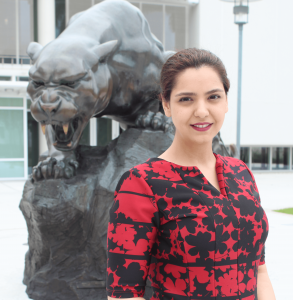
Familiar with the pain of being denied equal opportunities, Mitra Naseh has spent most of her life advocating for vulnerable populations and pushing for equality. At age 13, she started volunteering in non-governmental organizations as an after-school tutor for street children in Tehran.
“My passion and commitment to work with vulnerable populations have guided my career and academic journey,” Mitra says. Her first professional position was as a humanitarian service provider in 2009 with the International Planned Parenthood Federation office in Tehran, where she was a manager for a reproductive health project for Afghan refugees. She later joined the office of the United Nations High Commissioner for Refugees in Tehran and worked as a caseworker interviewing refugees for resettlement and emergency cash assistance. She also worked for the UN Office on Drugs and Crime as part of the evaluation team monitoring the comprehensive drug treatment and HIV control services provided through drop-in centers for refugees.
Mitra earned bachelor’s degrees in Economics and Computer Software Engineering from Tehran University and Azad University in 2007 and a master’s degree in Economic Development and Urban Planning from Alzahra University in 2011. When she realized that she needed to learn more to be able to do more, Mitra decided to search for doctoral programs in social welfare with opportunities for research on immigrants and refugees. She was familiar with FIU’s Dr. Miriam Potocky because of her book on social work with refugees, which Mitra had cited multiple times in her master’s thesis. Mitra entered the Social Welfare program at FIU in 2015, and Dr. Potocky ultimately became her advisor.
“It was a turning point in my life,” Mitra says of starting her doctoral program. “I became a full-time student and researcher after being mainly a service provider for most of my life.”
Mitra’s primary area of work focuses on well being, inequality, and poverty among minorities with migration and forced migration backgrounds. She’s also interested in neurodevelopment and neurodegenerative conditions, specifically cognitive conditions associated with the trauma caused by forced migration.
“My research and publications focus on some of the most understudied topics in health disparities, including cultural adaptations in trauma interventions, refugees’ capabilities in fulfilling their potentials, and shortcomings of commonly used approaches in measuring deprivations,” Mitra says.
Mitra has received external funding as the principle investigator for three of her research projects, including funding from the Coral Gables Museum to guest curate the “Sheltering Survivors” exhibition, a project for which she received the 2018 FIU Provost Award for the Best Creative Project. She’s also interested in interdisciplinary research. Through a recent collaboration on a research proposal with two doctoral students at the University of Texas at Austin, she received the Solution Focused Brief Therapy Association 2019 Research Award.
Her work has also led to the creation of a mobile app. “My previous collaboration with three other doctoral students at FIU resulted in the design of SmartsAid, a mobile application helping refugees connect to information about available humanitarian services in their area,” Mitra says. “I was named among FIU’s 100 Women Innovators by FIU’s Center for Women’s and Gender Studies in 2018 for the idea and design of SmartsAid.”
Beyond her academic work at FIU, Mitra has served on the University Graduate School Advisory Board. She’s also served in the Student Government Association as a Graduate Senator, Chair of the Graduate and Professional Student Committee, and an e-board member. Other positions include serving as graduate representative of the School of Social Work at the Deans Student Advisory Committee and as student representative at the Educational Policy Committee. She co-founded the Initiative on Social Work and Forced Migration at FIU in 2019 and received the Outstanding Student Life Award under the Graduate Leadership Category in 2019 for helping enhance the overall graduate student experience at FIU.
After finishing her doctoral degree in Summer 2020, Mitra will join the faculty at Portland State University in Portland, Oregon, in Fall 2020 as an Assistant Professor in the School of Social Work. “I am looking forward to utilizing my research and teaching experience to prepare future leaders of social change,” she says.
Ahmed Imteaj

Ahmed (left) with Dr. Amini
Ahmed Imteaj’s interest in computing and programming began with a Google search. During his high school years in Bangladesh, he became enamored with how the Google search engine functions, and it influenced him to build a career in computer science.
Ahmed, now a second-year doctoral student in Computer Science, and his research supervisor, Dr. Hadi Amini, recently won the Best Paper Award at the Annual Conference on Computational Science and Computational Intelligence. The paper, entitled “Distributed Sensing Using Smart End-user Devices: Pathway to Federated Learning for Autonomous IoT”, introduced a new distributed sensing platform that enables the deployment of federated learning. Federated learning is a machine learning technique that trains a machine learning algorithm across multiple devices or servers without exchanging local data samples.
“The impact of this research goes beyond computer science and can be applied to various real-world applications, from healthcare to energy and transportation infrastructures,” Ahmed says.
Ahmed was introduced to the research aspect of IoT (Internet of Things) during a conference that he attended as an undergraduate student in Computer Science and Engineering at Chittagong University of Engineering and Technology (CUET) in Bangladesh. He then began to get more involved in IoT and began publishing papers about IoT and smart systems.
“In those papers, I tried to reveal findings of the conventional system and proposed some real-life problem’s solution,” Ahmed says. Examples of these types of solutions include autonomous fire alarm systems, robots for search and rescue missions, and interactive speech-recognizable robots.
After Ahmed completed his undergraduate degree at CUET, he chose to pursue his Ph.D at FIU. A number of factors drew him to the University, including the faculty, FIU’s research background and facilities, and the attractive campus and good weather. Ahmed soon joined Dr. Amini’s Sustainability, Optimization, and Learning for InterDependent networks (solid) laboratory. Solid lab is an interdisciplinary research group dedicated to bridging the gap between theory and real-world application. Ahmed considers joining the lab as the turning point of his doctoral career.
“At solid lab, we aim at solidifying critical infrastructures leveraging computing and information sciences, i.e., we are connecting Computer Science and Engineering worlds!” Ahmed says. “I try to answer how we can handle the problem of the continuous stream of real-data which is mounting over time and, thus, ensure more reliability, scalability, efficiency, and security than conventional cloud-based systems.”
After finishing his doctoral degree, Ahmed wants to pursue a research career as a research scientist or computer science faculty member. He says, “I would like to educate the next generation of computer science students and serve underprivileged people by contributing to the cause of working for humanity in the broader sense with whatever capabilities and scope I have.”
Michelle Pierre
 Returning to the Moon has been a constant goal of NASA’s, and Michelle Pierre is helping them reach that goal. Her work will help put people back on the Moon by 2024. It’s also work that recently won her the Innovation Mission Award for Exploration Ground Systems Technology at NASA Kennedy Space Center (KSC). Michelle, a doctoral student in Materials Science and Engineering, completed a Fall internship at KSC’s Material Laboratory Branch and is now a Materials Engineer at NASA KSC.
Returning to the Moon has been a constant goal of NASA’s, and Michelle Pierre is helping them reach that goal. Her work will help put people back on the Moon by 2024. It’s also work that recently won her the Innovation Mission Award for Exploration Ground Systems Technology at NASA Kennedy Space Center (KSC). Michelle, a doctoral student in Materials Science and Engineering, completed a Fall internship at KSC’s Material Laboratory Branch and is now a Materials Engineer at NASA KSC.
Michelle graduated from Kennesaw State University with a bachelor’s degree in Chemistry. She is currently finishing her dissertation at FIU under Dr. Norman Munroe, her major advisor, and Dr. Shekhar Bhansali, her co-major advisor.
Michelle initially came to FIU because of the quality of research facilities available here, but she says that it’s ultimately the people who make FIU worth it.
“Every research lab represents so many countries in the world, where many cultures come together to make scientific discoveries,” Michelle says. “Graduate school can be such a lonely and exhausting road, but I was surrounded by many other graduate students and mentors that believed in me, and we supported each other through all the twists and turns.”
As for her interest in science, Michelle says she has always loved exothermic reactions. “My high school chemistry teacher always pushed me to break things, make a mess, and explore,” she says. “He was probably the only adult in my life at the time that didn’t want me to clean up.”
Michelle says that she lost her path to science after graduating from high school, as she had to pay bills to support her daughter and family. She says that, as a single mother, it is extremely difficult to pursue a graduate degree and work at the same time and says that the National Science Foundation’s Graduate Research Fellowship Program enabled her to pursue a Ph.D. She credits Dr. Sonja Montas-Hunter and Dr. Bhansali for their help with applying for funding resources.
“The funding resources that people like Dr. Montas and Dr. Bhansali helped me apply for allowed me to provide financially for my daughters, while also freeing time up for me to focus on coursework and research,” Michelle says. “I would not be in a Ph.D. without their support.”
The NASA internship introduced Michelle to corrosion engineering, the focus of her collaboration with NASA and her dissertation.
“NASA’s Artemis program will land the first woman and next man on the Moon by 2024, using innovative technologies to explore more of the lunar surface than ever before,” Michelle explains. “In preparing for this program, NASA’s Exploration Ground Systems at Kennedy Space Center have already begun designing the next Mobile Launcher 2, or ML2. ML2 is the ground structure that will be used to assemble, process, and launch NASA’s Space Launch System (SLS) Block 1B rocket and Orion spacecraft from Launch Pad 39B at Kennedy for missions under NASA’s Moon to Mars exploration approach. The project that I am working on and that won the Innovation Mission Award will help make informed decisions on material choices on the ML2 that will prevent corrosion, stress corrosion cracking, and hydrogen embrittlement.”
After completing her doctoral degree, Michelle plans to continue working in the aerospace industry, solving real-world material problems through research and implementation. She also plans to remain connected to academia.
“I also hope to teach science part-time at the community college to encourage underrepresented groups to seek out STEM fields,” she says.
Alban Delamarre
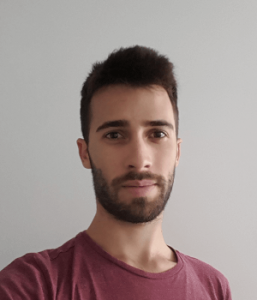
Alban Delamarre
Doctoral student Alban Delamarre and FIU alumnus Dr. Jaeson Clayborn recently received a $10,000 grant from National Geographic for their work on a virtual reality game designed to promote butterfly and forest conservation. And it all started because of basketball.
“I was playing on Jaeson’s team, and we started talking about our respective work,” says Alban, a 4th-year doctoral student in Computer Science. “One day he came up with the idea of using video games to teach about nature preservation. I was enthusiastic about that idea and offered to program a prototype of the game.”
That was the genesis of Butterfly World 1.0, an educational game that teaches nature conservation and exploration through butterflies and plants.
“Since the 1st prototype, Butterfly World 1.0 has evolved from a desktop simulation with one butterfly species to an immersive experience in a tropical dry forest ecosystem with over 10 species,” Alban says. “Working with Jaeson, I have learned so much about butterfly conservation and science communication. I visited field sites in South Florida, presented for butterfly societies, shared Butterfly World 1.0 with scientists and teachers in Cuba, and received a National Geographic grant.”
Alban was born and raised in France and received bachelor’s and master’s degrees in Computer Science from the National School of Engineers of Brest (ENIB). He was introduced to Dr. Christine Lisetti’s lab near the end of his master’s study and became interested in her work on virtual classroom simulators that support teacher training. He joined the project in 2016, when he started his doctoral work at FIU.
“I strongly believe that computer science is a tool that should be used for health and education,” Alban says. “When I was presented with the classroom simulator, this project seemed to completely match my vision of computer science.”
Alban has always been interested in computer science and technology. He once worked on an artistic project that used a virtual simulation of the sea to represent brain activity. The project led him on the path to his current work.
“I really like how VR allows me to use my technical skills to be creative,” Alban says. “I really enjoy working on Butterfly World 1.0 because I can apply my computer skills to do something creative and meaningful to society and wildlife.”
After completing his degree, Alban wants to use his expertise in virtual reality to help address issues related to climate change.
“Climate change is the biggest challenge my generation faces,” Alban says. “Computer science and virtual reality can be a great tool to communicate the science and motivate people to act and, basically, bridge the intention-behavior gap through education and empathy. Butterfly World 1.0 has great potential, and we have a lot of ideas for its future applications.”
Valentina Dargam
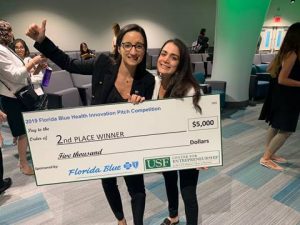
Valentina and Maria
Valentina Dargam has always been interested in medicine and projects that could help improve a person’s quality of life. She drew closer to turning those interests into reality when she and undergraduate Biomedical Engineering student Maria Camila Giraldo recently won second place at the 2019 Florida Blue Health Innovation Pitch Competition. Valentina and Maria presented an entrepreneurial pitch related to Valentina’s graduate work on new diagnostic approaches for aortic valve disease.
Valentina was born in Argentina and moved to the United States when she was 10 years old. She earned a BS in Biomedical Engineering from FIU in May 2018 and matriculated straight into the BME PhD program. “Biomedical Engineering, in my opinion, is the only undergraduate major that directly exposes you to medical issues and gives you the training to address them,” says Valentina, now a second-year doctoral student in BME.
The Florida Blue pitch competition was held in Orlando on September 19, 2019. The second place award that Valentina and Maria won included $5,000 in prize money and an invitation to pitch their idea at another conference later in the year. Fifty applications were submitted from teams across Florida, and from those applications, 12 teams were chosen to participate in a mentorship program to learn more about entrepreneurship and business development. Those 12 teams competed in the pitch competition.
“Several potential investors and collaborators have expressed interest in helping move the idea forward,” Valentina says.
Valentina also competed at StartUP FIU eMerge Americas Pitch Night and won a spot at eMerge Startup Showcase in March. EMerge Americas is an innovation and technology event in Miami with over 16,000 attendees. There, Valentina will present the same project she and Maria presented at the Florida Blue pitch competition.
Valentina, a McNair Research Fellow, says that FIU has played a crucial role in advancing her academic career by providing scholarship and research opportunities. “I met great mentors that encouraged me to pursue a PhD,” Valentina says. “They believed in me regardless of my previous experiences and were fully invested in my success. I wanted to stay at FIU because I know the importance of having people believe in you. Here, not only can I get a great education, but I can also be part of an inclusive community.”
After she completes her doctoral degree, Valentina plans to apply to a postdoctoral science policy fellowship to learn more about science advocacy and tackle issues such as lack of federal funding for research and bridging the minority gap in STEM education.
“I would love to come back to FIU for a faculty position and pay forward some of the great mentorship I received here,” Valentina says.
Valentina advises other students to take advantage of as many opportunities as possible. “Apply to scholarships, fellowships, travel awards, competitions, or anything else that might be relevant to your academic career,” she says. “Win or lose, you gain so much experience just by trying!”
Sunanda Guha
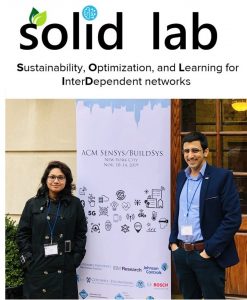
Sunanda and Dr. Amini at BuildSys 2019
As an undergraduate, Sunanda Guha developed a passion for research in computer science. Her passion has evolved, and now she is fully immersed in the world of artificial intelligence and machine learning. She recently received a prestigious travel grant to attend the Device-free Human Sensing Workshop at the 6th ACM International Conference on Systems for Energy-Efficient Buildings, Cities, and Transportation (also known as BuildSys 2019). The award is especially competitive, with students from around the world competing for the grant and an acceptance rate of 21%.
Sunanda, who is from Bangladesh, completed her undergraduate and master’s degrees in Computer Science and Engineering from the University of Chittagong. She focused on machine learning for several of those years.
Sunanda’s current research projects are mainly focused on using machine learning and data analytics to improve the operation of interdependent complex networks. “My research does not only contribute to theoretical algorithms for machine learning and data science, but also provides practical and efficient solutions to real-world problems of the 21st century,” Sunanda says. “I am working on both theoretical formulation of these problems and using simulation platforms and programming languages, such as Python, to verify my results.”
Sunanda’s interest in machine learning and AI began during her last year of undergraduate study, when she first started learning about AI through coursework. After that, she began exploring machine learning topics.
“The fascinating aspect of this field, as well as my previous research work in undergraduate and masters, motivated me to choose machine learning as my main research focus,” Sunanda says. “I have rich experience of deploying AI and machine learning to improve quality of life for citizens.”
Sunanda, a first-year doctoral student, came to FIU in Fall 2019 because she was impressed by the the School of Computing and Information Sciences at FIU’s College of Engineering and Computing. “The vast academic and research experiences involved in the formation of this school is really astonishing beside the resources and research facilities,” she says. “I was searching for graduate schools where I can find the research facilities as well as my dream project to work on.”
Sunanda has since joined Sustainability, Optimization, and Learning for InterDependent Networks laboratory (solid lab) led by Prof. M. Hadi Amini, Sunanda’s research supervisor. Solid lab is an interdisciplinary research group bridging the gap between theory and the real world.
Sunanda says that solid lab provides her with a nurturing environment to explore her ideas and conduct research on machine learning theory and its applications. She feels lucky to be a member of Dr. Amini’s lab. “His systematic guidance helps me work more efficiently and be productive in terms of learning novel concepts, conducting high quality research, as well as attending international workshops and conferences.”
After completing her doctoral degree, Sunanda plans to continue her research and hopes to pave the way for the next generation of underrepresented computer science students. She would also like to pursue a post-doctoral degree in computer science and become a computer science faculty member. “I always planned to contribute to a world where everyone, including women and underrepresented groups, has access to computer science education and research.”



